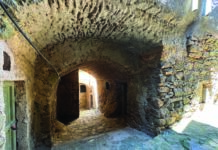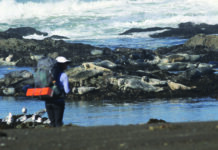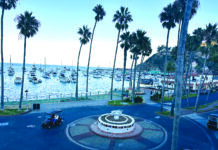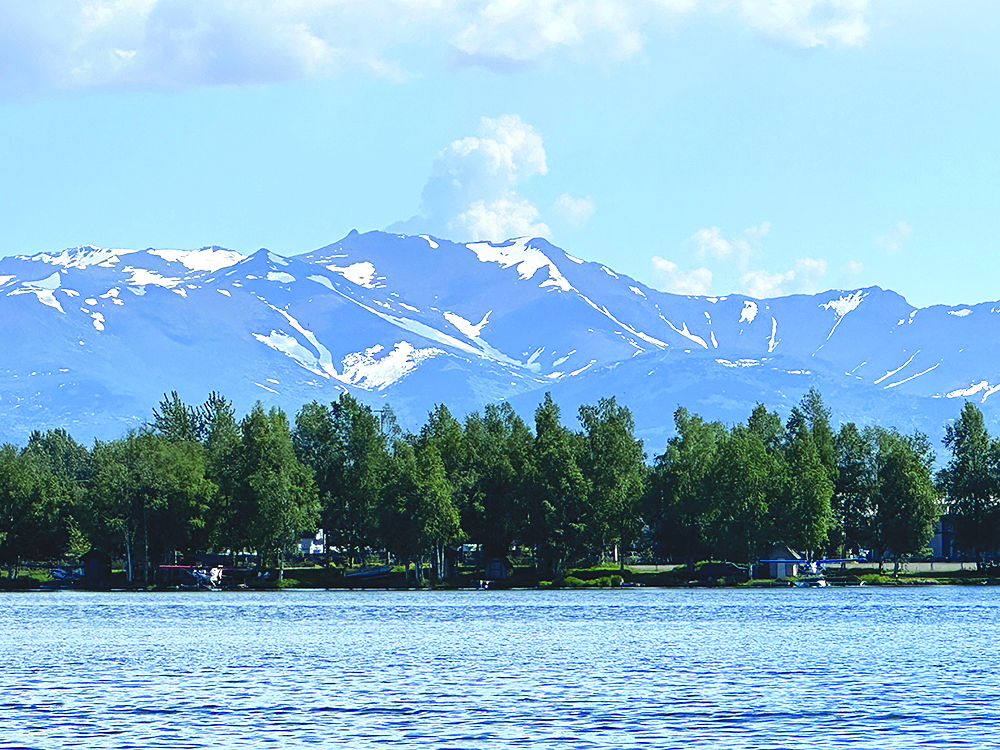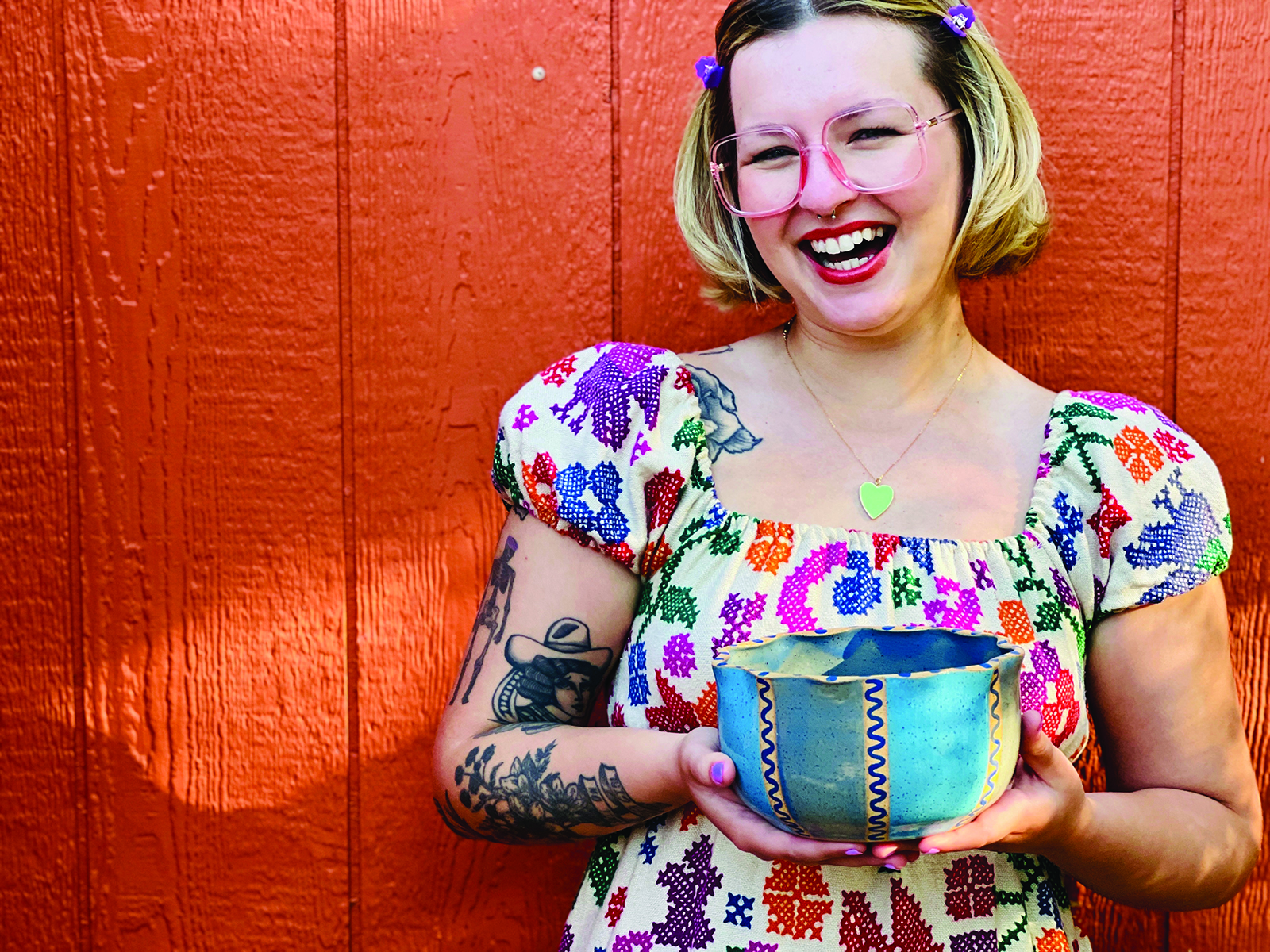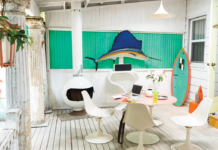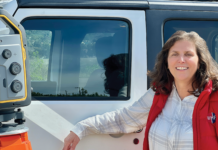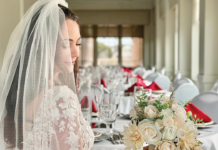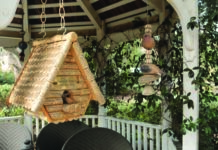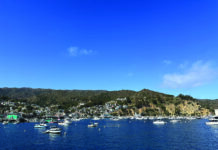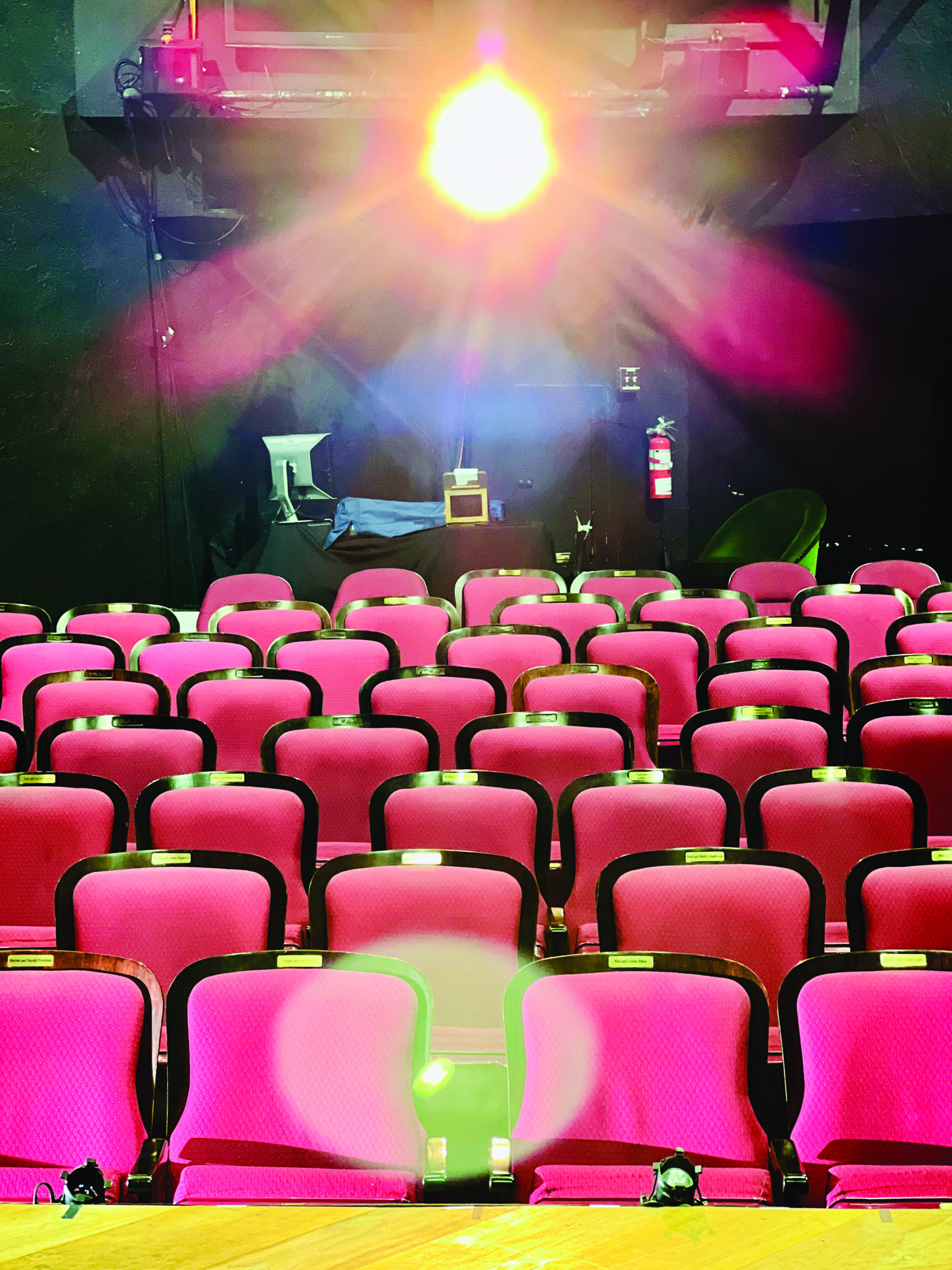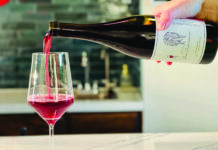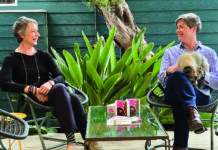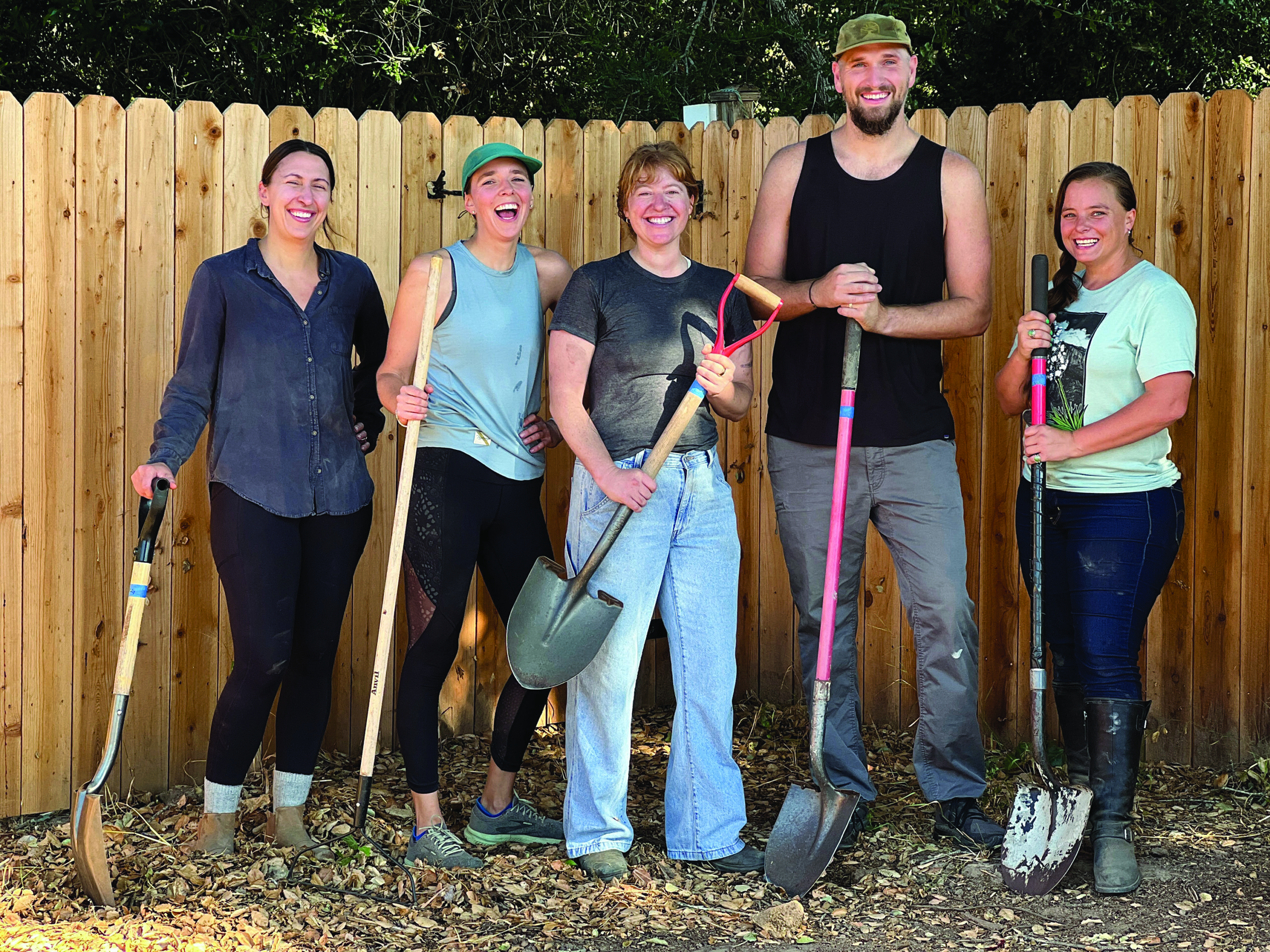by Mike Nelson
All photos courtesy of Sarah Murdoch
Long before the coronavirus wreaked havoc on the 2020 tourism business (and business in general), Sarah Murdoch was already thinking about the future of her industry.
Specifically, Murdoch — a Ventura-raised, Seattle-based architect-turned-travel guide, writer and impresario — had come to the realization, based on two decades of leading tours for Rick Steves Europe and her own Adventures with Sarah tour company, that tourism as many know and experience it needs to change.
“As tour operators, local guides and visionaries,” she explains, “we have the opportunity to make a conscious decision to make tourism better, more thoughtful and sensitive, and not promote the mass tourism mentality with everyone descending on the same city square all at once.”
“The Holy Grail of tour guiding,” she adds, with a broad smile, “is to create a sensation of individual travel, and to experience the delight and spontaneity of individual travel as a group.”
To that end, Murdoch and two dozen of her tour guide friends around the world — who share her “outside the box” approach to travel — have formed The Guide Collective, devoted to transforming the travel experience for those seeking something deeper, more intimate, more enriching and certainly more unique than a collection of Instagram posts.
That experience includes “virtual” livestreamed tours — a leisurely walk through Siena, perhaps, or a bike ride through a small French village — and, pending a healthier 2021, small-group “staycations” that prioritize making local connections over visiting “famous” locales.
“Of course, people want to see Big Ben,” she says. “But I would bet that for those who travel with me, Big Ben isn’t what they remember about visiting London. It’s going to that little pub, sitting with the locals and meeting the pub owner, and hearing local ghost stories.”
Especially in a post-pandemic world, a reality Murdoch experienced when, using her Irish passport, she visited Italy for five weeks in September to meet with fellow tour guides and local travel officials, and to livestream “virtual” experiences through Facebook to hundreds of followers.
For Murdoch — a graduate of Ventura’s Poinsettia Elementary and Balboa Middle Schools — her trip brought back memories of her first experiences in Rome during the 1990s, as an architecture student in the University of Washington’s study-abroad program.
Five years after earning her degree, Murdoch abandoned her architecture career for a job with Rick Steves Europe, leading tours and writing guidebooks. She later founded her aptly-named Adventures with Sarah company that takes travelers to out-of-the-way places — the kind of travel experiences that the Guide Collective, of which she is founder and executive director, will offer.
Recently, between juggling her roles as travel impresario, “Cucina Quarantena” online cooking instructor (from her home kitchen through Facebook) and home-schooling mom to sons Lucca and Nicola, Sarah Murdoch spoke by Zoom with Ventana on her experiences of and vision for travel going forward.
Ventana: What is the appeal of travel or you?
Sarah Murdoch: My first trip abroad was at age 10 with my family to see relatives in England and Ireland. We did the big grand tour of Europe, and it blew my mind. I loved the diversity, how each city was so rich in history. And in Europe, the trains can take you to see so much; in two or three hours, you can completely change culture.
A lot of people when they travel think, “I’ll see these things or sights.” But what about people’s experiences?
As a professional, I don’t think check-the-box, bucket-list tourism is as rewarding as people imagine it is. People get a lot more out of a trip when they step away from that need to take that Instagram photo, and go as culturally curious people, accompanied by someone who can help them understand and interact with the local culture, not just see the sights.
I led a tour several years ago in Cambodia, and of course you go to see Angkor Wat. But most memorably, we stopped in this little village in the middle of nowhere because we saw they were selling honey. We got out, talked to the locals, sat in their houses, bought honey and experienced their way of life. My son, who was 12, said, “You know, they may not have TV or electricity or what makes me happy, but they are probably happier than we are.”
And that drives the work I do now. How do I create tours and write about travel in a compelling enough way to get people to think deeper about how to approach their travel? Is it, get that photograph and say you saw the Mona Lisa, or do you want to connect with the local culture?
How did the Guide Collective come about?
That idea has been in my head for a couple of years, because I had a different vision of how travel can go. It started with Adventures with Sarah. Then, when about 30 tour guides were laid off in May from Rick Steves, I thought, let’s try something new. How do we carry on doing the work we love, in a time when we can’t do it?
I know a lot of interesting people around the world who have the potential to connect with many more, especially through social media. I wanted to help everybody who was at loose ends, so I called a meeting in April of anyone wanting to learn how to do videos or be a travel writer.
We’re now at 20 to 25 people, some who I hardly knew before this, and our vision keeps growing. Collaboration is so powerful, and so many people in different countries have different skill sets. It’s been almost like a support group for unemployed tour guides, because it’s hard not to do what we love so much.
What kinds of virtual and in-person travel experiences will your Guide Collective members offer?
Initially, we want to have two or three live virtual events weekly as long as the pandemic lasts, depending on what the situation is. By doing virtual tours, we see a way to make it through this pandemic, make a little money, and find a new way for people to express ourselves.
In Italy, it was really cool doing live streams. A local guide in Pompeii called me to come do a virtual tour, the first one he’d done all year, and said, “It felt good to be normal again.”
As for actual tours, Guide Collective is not a tour operator, though it may become one. At the moment, it’s simply a way to promote tours that each Guide Collective member can operate, and you go online through the individual member to book tours. Some are sold out for next year, and I think we’ll do really well, because people have responded favorably to our different vision for travel.
What can a Guide Collective member offer that a larger company cannot?
It’s a more personal experience. You’ll book a tour directly with the person leading the tour, so you know what you’re getting. People who sign up with me are excited to travel with me because they know what to expect, they get my personality and my silly sense of humor. You know everyone in your group is on the same page, and it’s more enjoyable.
If you’re leading a larger group with a lot of people who don’t know you, you have to spend time proving you know what you’re talking about. As an American tour leader, I’ve had people look at me like, “Who do you think you are, talking about Sicily?” and it takes time to convince them that, yes, I’ve spent a lot of time in Sicily, I do know what I’m talking about. [Murdoch co-authored Rick Steves’ 2019 Sicily guidebook.]
How large will your groups be, and how does the pandemic affect that?
My ideal is 14 or 15 at most. That means your costs may be higher on one hand with a smaller group, but as small operators without a corporate parent we also have a smaller overhead — I work from home, for example — so we can still offer competitive prices.
Travel will be changed irrevocably after this pandemic. Bus companies and museums are anticipating regulations that will limit the numbers, so you can’t pack 28 or 29 people on a bus, or 40 to 50 from a cruise ship, to visit crowded museums anymore. I don’t think anyone wants that; it’s not safe or smart.
Talk about destinations and itineraries; how will they be different?
I’ll take people to see things where there aren’t other tourists. You can find cities everywhere that people have never heard of that offer amazing things. In Italy, one of the places I’ll go to is Puglia; it’s glorious, with wonderful museums and architecture, and hardly anyone speaks English. There is plenty to see outside of the main city centers, away from crowds, where you can see culture in action.
And I am a spontaneous person; I avoid detailed itineraries. If I see a pecorino farm by the road in Sicily, I want to pull over and talk to the guy. With a small group, you can take people places you can’t take big groups to. It’s so lovely to share those spontaneous adventures with others.
Elaborate on the “staycation” concept.
Well, you could go to Venice for two days, stand shoulder to shoulder with thousands of people in St. Mark’s Square and think Venice is too crowded. The reality is that Venice is a beautiful little village with a relatively small population, where everybody knows everybody.
So I’m planning a seven-day staycation in Venice that focuses on Venice’s six districts, each with something that’s unusual and local. We want to turn people’s expectations upside down. Tourists enjoy ciccheti [appetizer] crawls in the evening, and we’d love to do that in the morning, when the locals go for a morning glass of wine and a snack. Let’s eat and experience the city like a local.
My friends in other cities are creating similar itineraries to change the narrative in tourism. Bottom line: I want it to be a local perspective.
Before the pandemic, tourism had become increasingly popular — maybe too popular?
2019 was the busiest year ever for tourism, and it was a mess. People were everywhere, and cities all over Europe felt like they were at a breaking point. And those of us in the tour industry were losing our marbles by year-end because it was too much.
Now with the pandemic, we’re having a breather. We know tourism will come back, but do we want it to come back to what it was?
What do the locals want?
In Italy I talked with travel writers, hotel and restaurant owners, and others who have a stake in tourism. And the bottom line is that they do not want people to do 10 cities in five days because that does nothing to promote cultural understanding. They said, “We’d love to see people stay longer in one place, at least a week, go to local museums that have two visitors a day, learn our culture, eat in local restaurants, and really become part of our cities.”
And that’s everywhere, not just Italy or Europe. People want travelers in their communities to get to know the place. The locals love this idea; it’s putting money in their local businesses in their communities, family-owned hotels and restaurants.
It’s an idea worth trying, and I think it will be the way people enjoy travel in the future.
Guide Collective tours being offered for 2021 and 2022 (subject to local health and travel regulations) include New Zealand, Australia, Italy, Spain, Greece, Slovenia, Morocco, South Africa, Uganda, India, Patagonia and Peru.
For more information visit:
The Guide Collective: www.guide-collective.com.
Adventures with Sarah: adventureswithsarah.net.
Facebook: adventureswithsarah
Twitter: @sarahrmurdoch
Instagram: @adventureswithsarahm.


